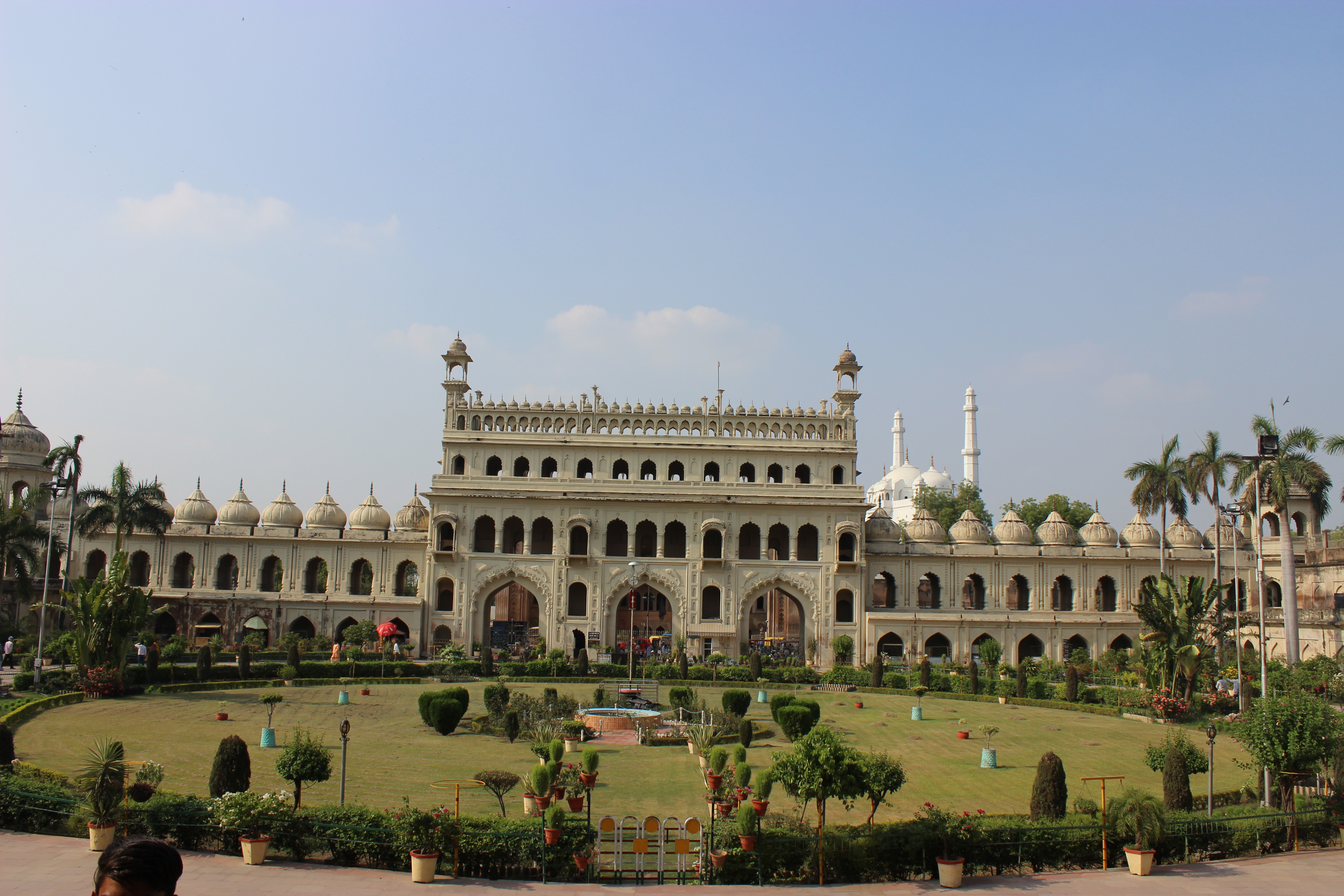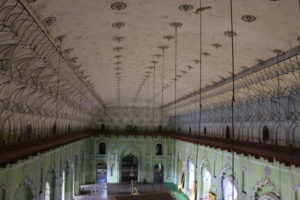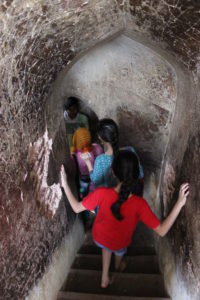Bara Imambara: Where history stands still

Rajkumari Sharma Tankha
I love travelling, visiting new places and knowing about how people live there and what people eat and wear is something I simply enjoy.
Lucknow has been on my mind for long. I had heard a lot about this city, its Bara and Chhota Imambaras, its Bhool Bhulaiya, its food and its pehle aap-pehle aap culture. I wanted to visit the city and experience all this first hand. So, last year when my daughter was called by the DGMS, Lucknow for her NEET counseling, I was happy as it gave me a chance to visit the city that has been on my mind for so long.
Apart from chikan suits and sarees and its non-veg delicacies like tunde kebab, Lucknow is also famous for its Chota Imambara, Clock Tower, British Residency, Crocodile Rehabilitation Centre, Begam Hazrat Mahal Park (built in memory of the Awadh queen for her contribution in the forst war of independence in 1857), Kaiserbagh Palace Complex and not to forget the Gomti River Front. But it is Bara Imambara that truly occupies a pride of place among the heritage monuments in the city of nawabs.
Built by Asaf-ud-Daula, the fourth Nawab of Awadh in 1784, and designed by Delhi architect Kifayatullah, Bara Imambara is a notified heritage monument.
Also called Asfi Imambara (named so as Asfi was the nawab who got the construction done) it was built as a part of a relief project for a major famine that took place in the year 1784.
The guide tells us that over 20,000 men were hired for the construction of this complex. While common men worked all day to bring up the magnificent edifice; another group of men were made to bring down the day’s construction during the night. This was the Nawab’s way of making sure that no one went out of work, the guide says, proudly. And it carried n for 11 years! Such were the ruler’s ways of helping his people, back then. I think the current creed of politicians can learn a thing or two from them!
Ever since it got constructed, Bara Imambara has been an important place of worship for the Muslims; they come here every year to celebrate Muharram.
We visited the place during the hot summer afternoon of May but it was brimming with people. That’s enough to explain its popularity.
The architecture of this 233-year-old structure doesn’t cease to amaze you. Its central hall, the largest arched hall in the world, is 50 meters long 15 meters high. The guides there tell us that the blocks used in its construction have been put together with interlocking system of bricks, without any use of girders and beams. And the roof has been standing tall without any pillars to support it for the last over 200 years. The entire weight of the monument is balanced on the arched doors, windows and corridors.
The incredible maze, Bhulbhulaiya is a major part of Bara Imambara.
Located in the upper floor of the monument, a stairway leads to this level. One can view a scenic panorama of the city from the top of this monument—absolutely breath-taking. The Bhulbhulaiya is a must see and the best way to find your way out without getting lost is by hiring a guide. It is said that great treasures are hidden in the secret tunnels of this maze.
The monument remains open from morning 6am to evening 5pm.
The proverb deewaron ke bhi kaan hote hain originated from this place, says the guide proudly. Even if you whisper something against the wall on one end, it can be heard clearly on the other end. This was how people communicated in the eventuality of an impending attack back then.
There also is a passage to the underground tunnels leading to Delhi, Faizabad, and Allahabad. The tunnels were sealed after some British soldiers went in to look for the royal treasure and never returned.
The complex also has a step well called Shahi Baoli—- now closed for public. The Baoli was the source of water for the construction of the buildings. It also served as a surveillance point as whatever happened at the gate could be witnessed as reflection in its waters. The guide tells us that a Dewan, who had the keys to the treasure house of the Nawab committed suicide in this Baoli to escape arrest from the British forces.




3 Comments
informative piece
good post nice information……….Read more about career,exam,colleges,admission check the link
Educationasia.in
This content is really informative, thanks for sharing,
even i found an amazing content, have a look at this.
srmgeet